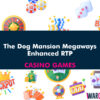

Poker, both in the physical and online realms, is as much a psychological battle as it is a card game. At the heart of this psychological warfare lies the art of bluffing, a crafty maneuver that can either make or break your poker game.
The Psychology of Bluffing:
Bluffing is the art of misleading your opponents, making them believe you hold a stronger hand than you do. To understand the psychology of bluffing, consider these key elements:
- Deception: Bluffing capitalizes on the human tendency to misinterpret cues. By acting confidently or timidly, you can influence how others perceive your hand.
- Fear and Doubt: Skilled bluffers prey on the fear and doubt of opponents. They create uncertainty, leading players to fold even strong hands.
- Reading Your Opponents: Part of successful bluffing is the ability to read your opponents. Understanding their playing styles and reactions is essential to execute a successful bluff.
Strategies for Effective Bluffing:
- Select Your Spots: Bluffing shouldn’t be a random act. Choose your moments wisely, such as when your position, table image, and the community cards favor a bluff.
- Vary Your Bluffs: Repeatedly bluffing with the same pattern makes you predictable. Mix up your bluffs to keep your opponents guessing.
- Size Matters: Your bet sizing should be consistent with your story. A small bet may suggest weakness, while an overbet can indicate strength.
- Pay Attention to Timing: Bluffing at the right moment is crucial. Consider the flow of the game and how your opponents have been reacting to previous bets.
- Use the Semi-Bluff: A semi-bluff is when you have a drawing hand that could become strong. It adds an extra layer of complexity to your bluffs.
The Bluff as an Art Form:
Bluffing is more than a mere tactic; it’s an art form. To master it in the online poker arena, you must practice, refine your skills, and adapt to the psychology of your opponents. While luck plays a role in poker, the art of bluffing empowers you to influence the game’s outcome.













